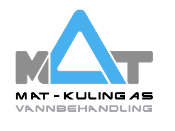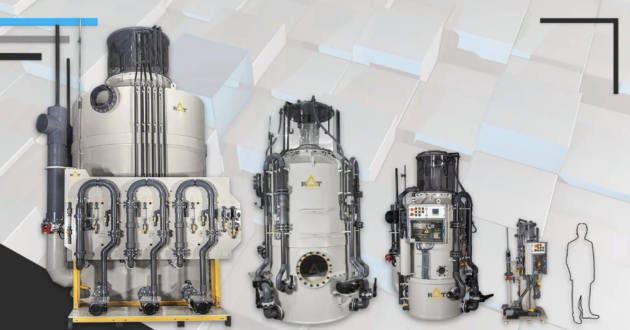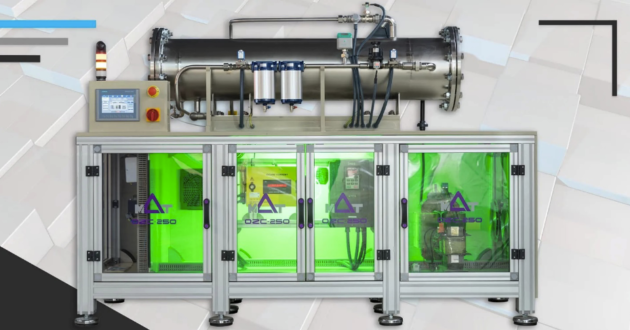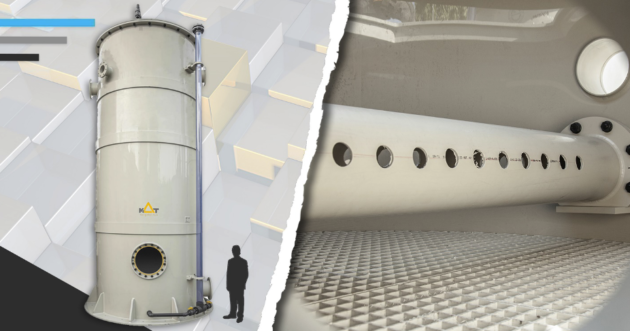
Brought to you by MAT-KULING
Enhance Fish Density in Recirculating Aquaculture Systems through MAT-KULING Innovative Technology
September 25, 2023 in Features Sponsored Content
By Sponsored by MAT-KULING


Introduction
In the realm of sustainable aquaculture, the search for more efficient and environmentally friendly methods of raising fish has led to the evolution of Recirculating Aquaculture Systems (RAS). These systems, focused on all kind of fish, from larvae stage to market size of fish, have undergone remarkable advancements in the last decade. This progress has brought forth a deeper understanding of the crucial elements that enhance fish density, leading to increased productivity, however simultaneously improving water quality. In this article, we delve into the importance of various components within MAT-KULING Recirculating Aquaculture Systems, which include in their arsenal among others drum filters, protein skimmers, biological filters, degassing towers, ozone generators and UV disinfection systems, shedding light on their pivotal roles in maintaining optimal water conditions while enlarging productivity.
The Rise of RAS and Its Benefits
Recirculating Aquaculture Systems (RAS) are a sophisticated and closed-loop approach to fish farming that emphasizes water reusability and resource efficiency. This technology involves the continual filtration and treatment of water within a controlled environment, reducing the need for vast amounts of water and minimizing the risk of polluting natural ecosystems. At the same time, indoor RAS facilities can keep the fish free of all kinds of pathogens such as parasites, viruses and harmful bacteria.
Elements of Importance to Increase Fish Density
- Solid Waste Removal: Accumulation of solid waste can lead to poor water quality. Mechanical filtration systems are integrated into RAS to remove particulate matter, preventing its decomposition and the subsequent release of harmful substances.
- Biofiltration Systems: One of the key components in a successful RAS is the biofiltration system. Beneficial bacteria are cultivated to break down ammonia and nitrite, converting them into less harmful nitrate. This prevents the build-up of toxic compounds that could otherwise inhibit fish growth and survival.
- Water Oxygenation: Oxygen levels in the water are paramount for fish respiration. Increased fish density can deplete oxygen levels quickly, posing a risk to the health of the fish. Advanced RAS incorporate efficient oxygenation systems that maintain the optimal dissolved oxygen content.
- Salinity Control: For saltwater and brackish water species, maintaining the appropriate salinity is essential. RAS employs sensors and automated systems to ensure a stable salinity level, reducing stress on the fish and promoting their well-being.
Development of RAS in the Last Decade
Over the past ten years, the RAS industry has undergone remarkable transformation. Technological advancements have led to the creation of more efficient and cost-effective systems. Improved monitoring and control systems allow for real-time adjustments, optimizing conditions for fish growth. Moreover, research has led to a greater understanding of fish behavior and requirements, enabling the design of systems that mimic their natural habitats more accurately. These developments have contributed to a significant increase in fish density achievable within RAS, resulting in higher yields and reduced environmental impact.
Protein Skimmers: Clearing the Way for Pristine Water

Protein skimmers, also known as foam fractionators, play a crucial role in maintaining water quality in RAS. These devices remove organic compounds, such as proteins and dissolved organics, by creating a froth of bubbles that captures and removes them from the water column. This prevents the accumulation of substances that can contribute to poor water quality and disease outbreaks. By employing protein skimmers, MAT-KULING RAS can sustain higher fish densities without compromising water quality both with saltwater foam fractionators and freshwater protein skimmers.
Ozone Generators: Purifying Water through Oxidation

Ozone generators are another indispensable tool in RAS technology. Ozone is a powerful oxidizing agent that effectively eliminates pathogens, parasites, and harmful microorganisms from the water. It breaks down organic compounds and reduces the need for chemical additives, promoting a more natural and sustainable approach to water treatment.
By incorporating ozone generators, MAT-KULING RAS not only ensures the health of the fish but also minimizes the environmental impact of aquaculture operations. Nowadays, a very common strategy is to combine ozone along with protein skimmers, which improves the removal efficiency and has additional microflocculation effect.
Degassing Towers: Balancing Gases for Optimal Conditions

Degassing towers play a critical role in regulating the levels of dissolved gases, such as carbon dioxide and nitrogen, within RAS. Accumulation of these gases can lead to pH fluctuations and stress among fish. Degassing towers facilitate the removal of excess gases, maintaining stable and optimal water conditions. This is particularly vital in high-density systems where gas exchange is more challenging due to the increased biomass.
Conclusion
Recirculating Aquaculture Systems have ushered in a new era of sustainable fish farming, with advancements in technology revolutionizing the industry. The last decade has seen remarkable progress in optimizing these systems for all kinds of fish, or sea food in different life stages. By focusing on crucial elements, which have been mentioned above, RAS has enabled fish farmers to achieve unprecedented fish densities without compromising water quality, however maintaining good welfare of farmed fish The integration of protein skimmers, ozone generators, and degassing towers has further elevated the efficiency and effectiveness of RAS, ensuring a healthier environment for fish and a more sustainable approach to aquaculture overall. As the world continues to address the growing demand for seafood, Recirculating Aquaculture Systems stand as a beacon of innovation and hope for responsible and productive fish farming.
Björn Dörum

Managing Director and owner of
MAT-KULING Vannbehandling AS.
Stavanger Norway